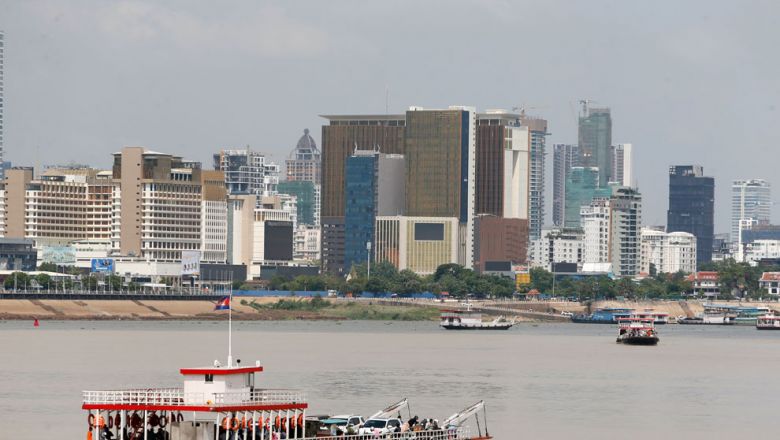FDI inflows hit $45.8B by end-Mar
FDI inflows hit $45.8B by end-Mar
FDI (foreign direct investment) inflows into Cambodia – since the August 5, 1994 promulgation of the old Law on Investment – stood at 185.7 trillion riel (roughly $45.8 billion) as of March 31, up nine per cent on an annual basis, with the Greater China region accounting for a 45 per cent share, up one percentage point year-on-year, according to a bulletin issued by the central bank.
The region – comprising mainland China, Hong Kong, Macau and Taiwan – retained the top spot of FDI capital source, at 83.5 trillion riel, which was up 11.1 per cent year-on-year from just over 75 trillion riel, indicated the bulletin, which cited figures from the National Bank of Cambodia (NBC) and Council for the Development of Cambodia.
Next on the list were South Korea (22.4T riel; up 10.4% year-on-year), Singapore (12.1T riel; up 8.8%), Japan (11.3T riel; 11.6%), Vietnam (10.2T riel; up 0.4%), Malaysia (8.3T riel; 5.0%), Thailand (7.8T riel; up 4.5%) and the UK (6.1T riel; up 6.2%). Others made up 24.0 trillion riel, marking a 7.3 per cent year-on-year increase from more than 22 trillion riel.
Broken down by sector, “financial activities” received the most FDI at 43.8 trillion riel, followed by manufacturing (39.2T riel), real estate (21.5T), accommodation (19.1T), agriculture (17.7T), hydropower (11.7T) and construction (9.8T), while others took in 22.9 trillion riel – just over one-eighth of the total.
For comparison, FDI inflows stood at 122.0 trillion riel at end-2018, rising to 138.5 trillion at end-2019, 150.4 trillion at end-2020, 168.8 trillion at end-2021, and 183.4 trillion at end-2022, for a compound quarterly growth rate (CQGR) of 2.58 per cent over the four-year period, or nearly 2.4 per cent if excluding the first year, which was prior to Covid-19.
However, while the bulletin did not provide a concrete figure for the on-quarter growth rate for the first quarter of 2023, ended March 31, its statistics suggest that it fell in the range of 1.19-1.31 per cent, far lower than the aforementioned CQGRs.
In an interview with The Post on July 16, Cambodia Chamber of Commerce vice-president Lim Heng commented that the Kingdom is still capable of attracting continued FDI inflows despite unfavourable global economic circumstances.
He attributed this to the Kingdom’s political stability, skilled labour pool, transportation infrastructure and legal investment framework, in addition to external factors like the emergence of new international markets and preferential tariff arrangements or trade agreements with several countries, including those with developed or large economies.
“Given Cambodia’s political and economic circumstances, I firmly believe that foreign investment in Cambodia will accelerate as the world economy recovers, especially if the conflict in Ukraine is resolved,” he said.
Royal Academy of Cambodia economist Hong Vanak argued that the nine-per-cent year-on-year boost in FDI inflows augurs particularly well for the economy, considering the sheer number of investment plans scrapped or put on ice around the world amid the ongoing series of political crises.
This uptick “is not a coincidence; rather, it is the result of efforts made by the Royal Government of Cambodia, which has launched a bevy of new strategies aimed at fostering a favourable investment environment”, he asserted.
Vanak ascribed China’s status as Cambodia’s biggest investor to “good relations” between the governments and peoples of the two countries, noting that East Asian nation is also a major supplier of raw materials for the Kingdom’s export-oriented manufacturing and processing industries.
“Its advantageous geographical location and good diplomatic relations will help Cambodia draw more foreign investment, especially from China,” he said.
For reference, the General Department of Customs and Excise of Cambodia (GDCE) reported that the Kingdom’s international trade volume in the first half of 2023 totalled $23.694 billion, down 13.03 per cent year-on-year and down 5.91 per cent half-on-half.
Exports made up 48.39 per cent of that, amounting to $11.464 billion, up more than 0.75 per cent year-on-year and up nearly 3.25 per cent half-on-half. Imports clocked in at $12.229 billion, down 22.92 per cent year-on-year and down 13.13 per cent half-on-half.
Cambodia’s trade deficit – the amount by which a country’s imports exceed its exports – for the six-month period came in at $764.701 million, shrinking by more than 82.95 per cent year-on-year and by 74.28 per cent half-on-half.
This was the best semi-annual trade balance figure since the $132.36 million surplus registered in the second half of 2020, when imports and exports amounted to $9.851 billion and $9.982 billion, respectively, according to the GDCE.















